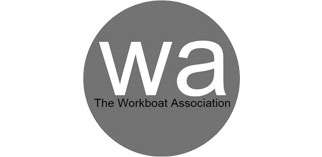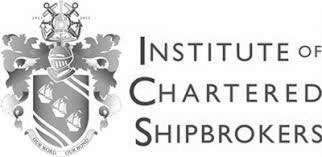£40,000 for server with under a GB capacity
Written by Century Marine on 25th June 2020

While the basic principles of shipbroking have remained more or less the same, the profession has evolved considerably since 1995. This is due, in no small part, to the internet, computer and communication revolution that has taken place during the past 25 years.
Today shipbrokers have at their disposal an array of highly sophisticated computing power and communication portals that allow them to access and communicate vast amounts of information almost instantaneously. A broker today might receive an enquiry for a vessel, of a certain, age, type and size from a buyer or charterer. Having searched its database and uploaded the details, the client would have a response with spec sheets and drawings within a matter of minutes.
Much of course depends on the accuracy and how current the data is but it wasn’t always that simple. In 1995 computing and communication was still in its infancy and the whole process of engaging with each other considerably slower. Shipbroking was just getting used to the idea of computerisation.
My own journey in shipbroking started just over 30 years ago in the late 1980s when I came ashore with the Cunard Steamship Company. After a brief spell in operations I moved to its shipbroking subsidiary, H E Moss, which had offices in London and Liverpool. While H E Moss no longer exists, it was one of the oldest shipbroking firms in the world, being formed in 1840.
Just before I joined, it also became one of the first shipbrokers to install a DOSbased computer system. It was very low in capacity but had a very basic database. You could search for a number of attributes to find suitable ships for sale or charter, but it still required the results to be transposed manually to a telex machine in order to send them out.
Some broking firms were still using manual methods, such as card systems with hundreds of cards sorted into types and dwt, and where the information on them was handwritten. They were filed into small drawers and the whole system was laborious and time consuming.
Drawings and technical data requested by a buyer or charterer usually had to be couriered to the broker, copied and then sent to the client. The process might take weeks – and that was before the client actually decided to pursue the vessel.
In the early ’90s I became a towage and salvage broker with Marint Offshore Services which was using mainly telephone, telex and fax communications. Computerisation had already moved on and having explained the benefits to my forward-looking boss Tim Cowley, the company decided to actively purchase a computer system.
Four desktop computers, a file server, a comms server, printer and specialist database were purchased at a huge cost in those days of around £40,000. I seem to recall the file server had less than a GB of capacity, but it did the job.
Brokers’ cost structures were very different in the 1990s to what they are today. Topping the list would be the telephone bill, which in today’s terms would be astronomical. There was much less competition among the phone providers and mobile communication was still in its infancy. Even if you had a mobile phone the coverage wasn’t great and the phone itself was large and cumbersome. Telex and fax costs were also high, so the cost of circulating a vessel for sale or charter was expensive compared to the negligible amount that an email circular costs today. Some brokers would also circulate ships by post, so postage and copying costs could also be high.
Travel costs were substantially more and there were far fewer direct routes, resulting in long detours. Budget airlines didn’t exist.
During 1997, when attending a closing in Trieste, the flight from London was via Munich and cost more than a return trip from London to Singapore today.
Business trips were therefore far fewer then. A trip away meant just that – because once you left the country there was very little communication with the office until your return. Today, in the age of laptops and smart phones, the office travels with you.
In 1995 there were very few specialist tug and offshore vessel brokers around the world. Tug brokers tended to be concentrated in London, the US and the Netherlands, while offshore vessel brokers were to be found in Norway, Aberdeen and Houston. The Asian and Middle East markets had yet to mature.
Conversely, there were many more tug and OSV owners as well as charterers spread around the globe, including plenty of small family-owned companies which no longer exist. Today there are many more specialist tug and OSV shipbroking firms around the world, ranging from large corporations to one-man bands, all chasing a decreasing pool of owners and charterers.
The increased ability to easily communicate around the world has certainly had a large impact on the way shipbrokers operate.
Twenty-five years ago it was still usual to have two or more brokers in the negotiation chain because it remained difficult to discover and communicate with new contacts. Today it is more likely to be one or two brokers where one represents the buyer/charterer and the other the vessel owner. Both scenarios work well, but there is then a difference as to how the broker tackles the negotiation. When two brokers are involved, the demarcation line is quite clear, in that each broker is working for their client and acts accordingly. But where there is only one broker then it must handle both parties: in effect becoming a servant of the negotiation to ensure that each contractual party ends up being satisfied.
Regrettably, there has been a decrease in the ethical conduct within the shipbroking community, including some of the larger companies who should know better. This has tainted the profession. The consequences of relegating the importance of the ethic of ‘our word, our bond’ has resulted in a lack of trust between many broking houses and put a strain on relationships between ship owners and shipbrokers. Fortunately, many brokers still work within the rules and realise that, while it takes a lifetime to build up a reputation, it can be destroyed overnight.
Shipbroking has clearly changed over the past 25 years and will carry on doing so as communications and the internet continue to develop.
While many shipbrokers have become adept at working remotely on the road, the Covid-19 coronavirus lockdown in many parts of the world has shown the benefit of that ability to continue their operations. In 1995 that would have been much more difficult.
The world is changing fast and who knows how shipbroking will be seen in the next 25 years. Hopefully, the future is bright as shipbrokers are adept at synchronising themselves to market developments and new technology. But then if they don’t stick to the rules – and the all-important principle of ‘our word, our bond’ – then that future might not be so rosy after all.
Recent News
-
04
Aug 2022All change at Century Marine Services Limited
Century Marine Services Limited is pleased to announce that Luke Hughes has...
-
24
Mar 2022Shipbrokers, intelligent anticipation and added value
Shipbrokers are often asked what they actually do. Typically, the question...
-
04
Jan 2022Hollywood comes knocking for Century Marine
Century Marine are proud to be involved with the latest Hollywood blockbuster...
-
26
Feb 2021UK Chamber of Shipping Virtual Conference
If you missed the UK Chamber of Shipping Towage Panel you can catch up on...
-
26
Feb 2021Workboat Association Members Profile of Nick Price
This week the Workboat Association has written a Members Profile on our own Nick...
.jpg)
.jpg)

